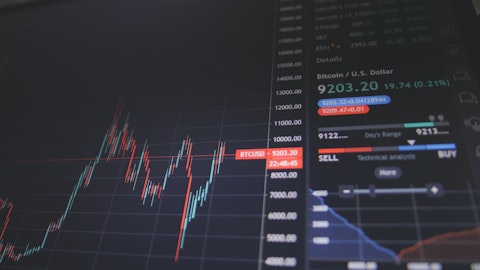And then, I also mentioned and I think it’s important to point out, this is the first-ever iEPCI, which is our unique commercial model, the integrated commercial model. The first time Petrobras is using this model. So, you’re absolutely right. We’ve done separation projects in the past. We’ve done boosting. This is a unique combination of advanced separation, the first time for CO2 specifically, as well as boosting and reinjection and putting this all together into an integrated system architecture is something that we are extremely proud and excited to be working on Petrobras that deliver this. And this is a – being done under the premise of design one build many. So as you point out, this can start to open up all sorts of other opportunities as we move forward.
Arun Jayaram: Thanks Doug. I’ll turn it back.
Operator: Your next question comes from the line of Dave Anderson with Barclays. Your line is open.
Dave Anderson: Great. Thanks. Good morning Doug. How are you?
Doug Pferdehirt: Good morning, Dave. Great. Thank you.
Dave Anderson: Just to follow up on that – Arun’s question on the subsea processing. Subsea processing we’ve been talking about for a long time. I want to go if I go back to probably more than 10 years ago you guys start introducing this. The cycle kind of ended I think – if my memory serves I think the cycle kind of ended before this really became before this really kind of took off. So maybe can you just talk about kind of what’s different today about subsea processing versus ten years ago? Maybe it’s just the CCS part. And how effective was it before? Kind of what’s changing? I’m just kind of curious why the adoption today, you’ve talked about the FPSO, but I seem to recall that was kind of the whole kind of point of this in the first place. So why didn’t that catch on before or maybe it did and why did it catch on now?
Doug Pferdehirt: Dave, I wouldn’t disagree. I would say the subsea processing market has maybe under-delivered in the past to be very blunt. What we’re looking at here is a completely different application. And as you know, that greenhouse gas intensity, CCS opens up a completely different dynamic in terms of the thinking around sanctioning a project. Okay. So let’s just say it adds an additional dimension, which is one reason why we believe that that this is a – I would call it almost a new market, almost wouldn’t put it under the bucket of subsea processing, even though it’s using many of the same technologies, there’s, multi-phase pumps and separation et cetera, but it is a unique application. Secondly, there is unique technology involved here and we’ve been working with Petrobras since 2016.
We have a R&D center for Subsea in Brazil, which gives us the unique ability to work closely with Petrobras in developing and bringing this technology to life. And then just our experience in terms of system integration and putting together the entire package gives us a reason to believe, Dave, that this application again, and I’m going to go back to point one, when you add this other dimension into the project if you will sanctioning criteria, I believe it makes the decision – means the decision more towards the Subsea.
Dave Anderson: And as you’re saying and it takes cost off the FPSO, as well as that sort of the idea to help kind of lower the overall development cost of the project. Is that sort of the intent here?
Doug Pferdehirt: Well, cost, but more importantly it just is going to you can build an FPSO with a basic top side in a fraction of the time that it takes to build one with a full gas processing plant on top. It doesn’t – the time isn’t in the building the haul and building the storage and the onloading and offloading system. The time element is in the topside configuration, which as you know is often done at a different yard than the haul is made or at multiple different yards then has to be all brought together configured assembled. You’re building a floating if you will gas processing Unit or refinery in a broad sense are just much more complex. So, as our whole focus and it’s why our customers I think are proud of what we’re doing is, we’re going to help them improve their economics by focusing on shortening the cycle time. That’s the real focus today.
Dave Anderson: Okay. Thanks. And if I go back to the awards, your kind of two year outlook on Subsea awards out there. Even such essentially kind of added about $5 billion in orders to your kind of next year view. I’m just curious. In terms of your iEPCI awards, you’re saying 70% today. Does that number go up over the next two years? And I’m assuming – are you already working on these projects? I mean, is that kind of where your confidence comes from because I know these iEPCI award start at a very early stage. Is that kind of where this is all coming from? And so and if I can just pile on one more question in there. How is pricing evolving here? We’re in a consolidated market now. Are we starting to show up? Is that starting to show up in the bids? Sorry I packed a lot in there.





